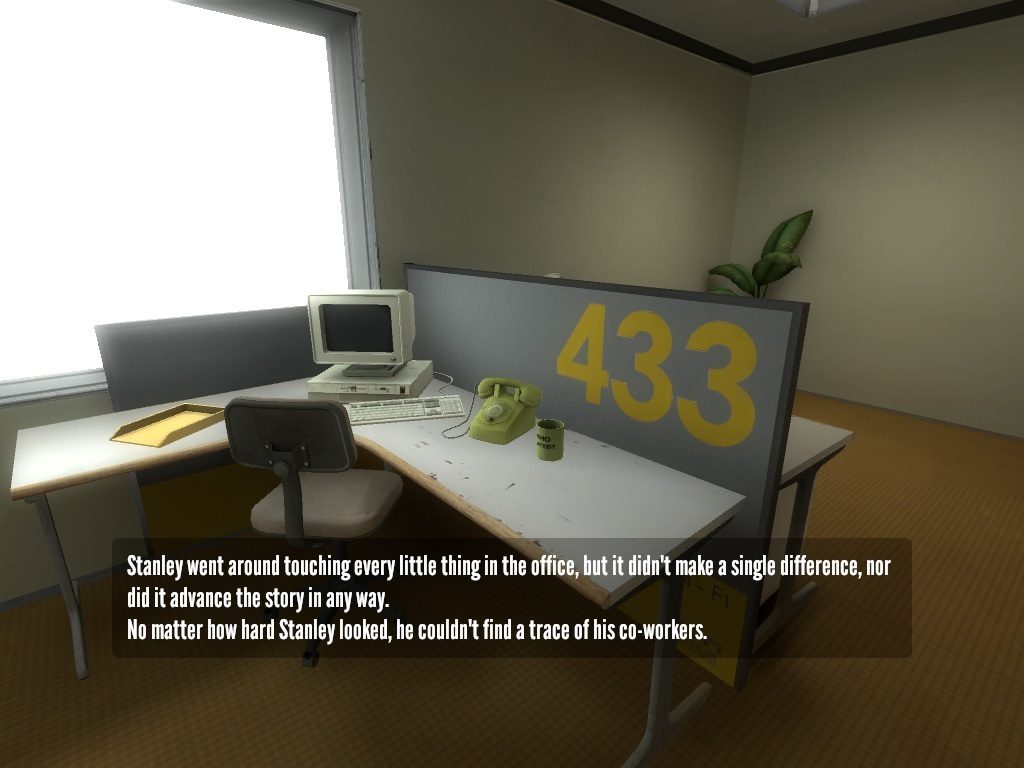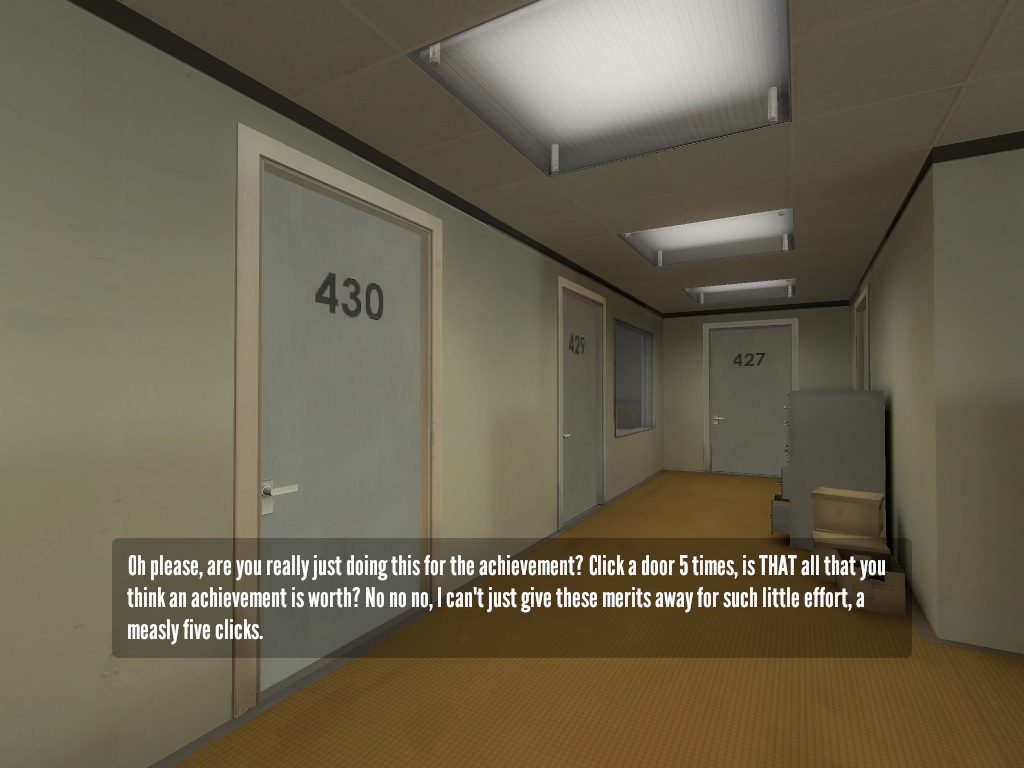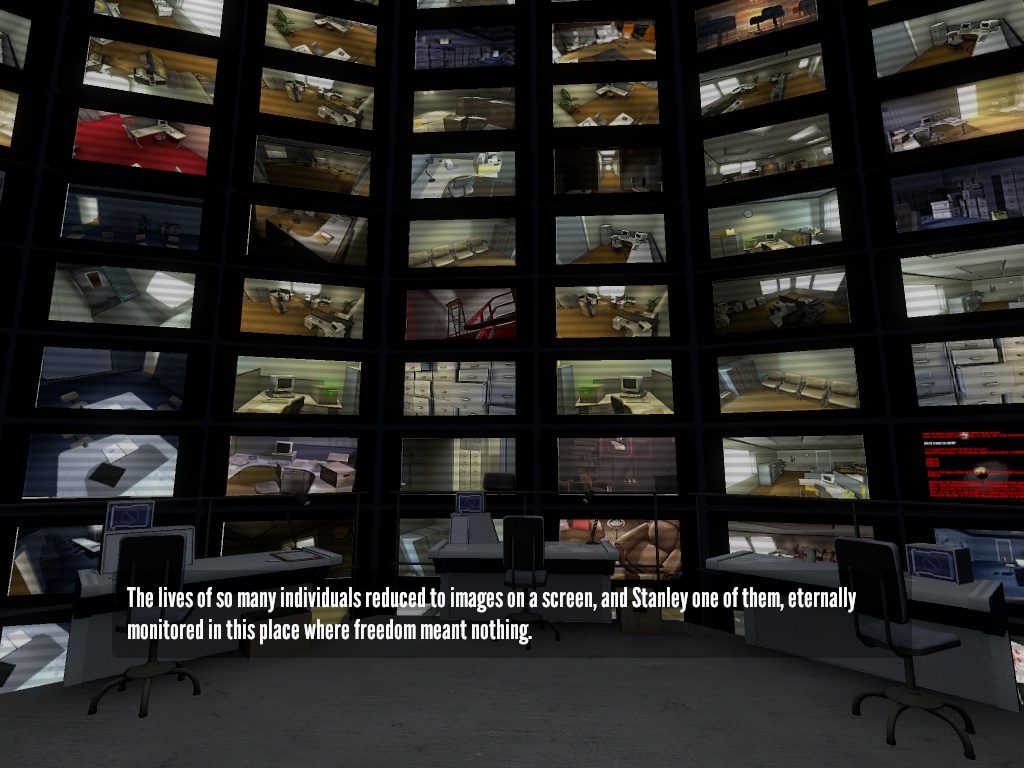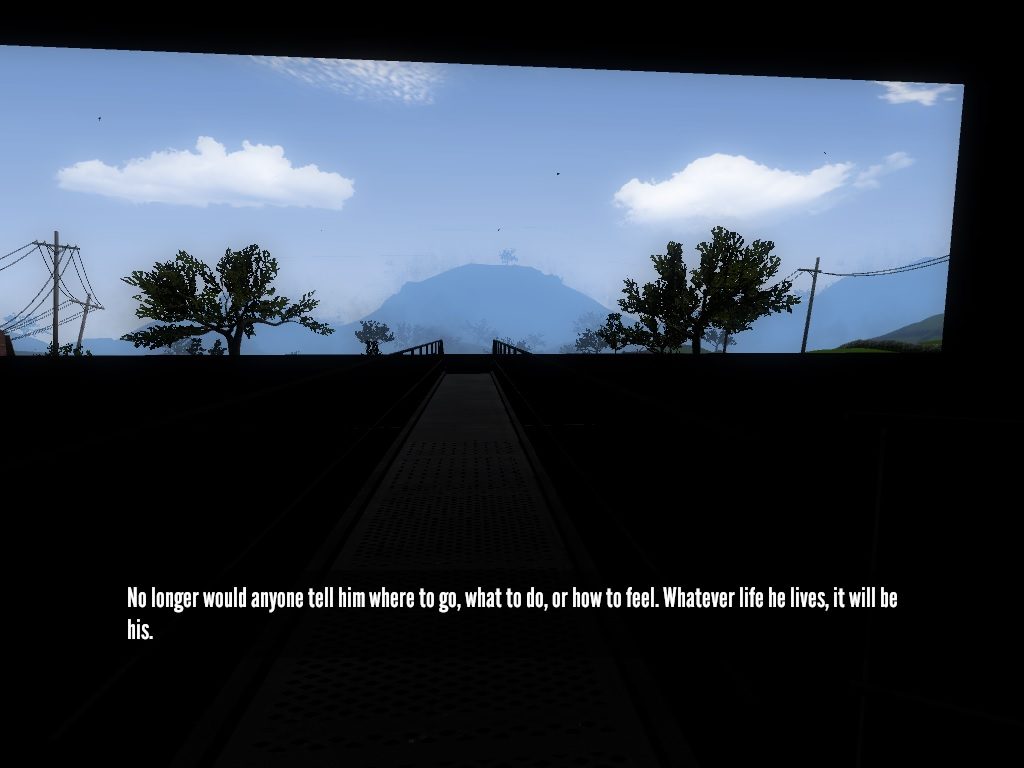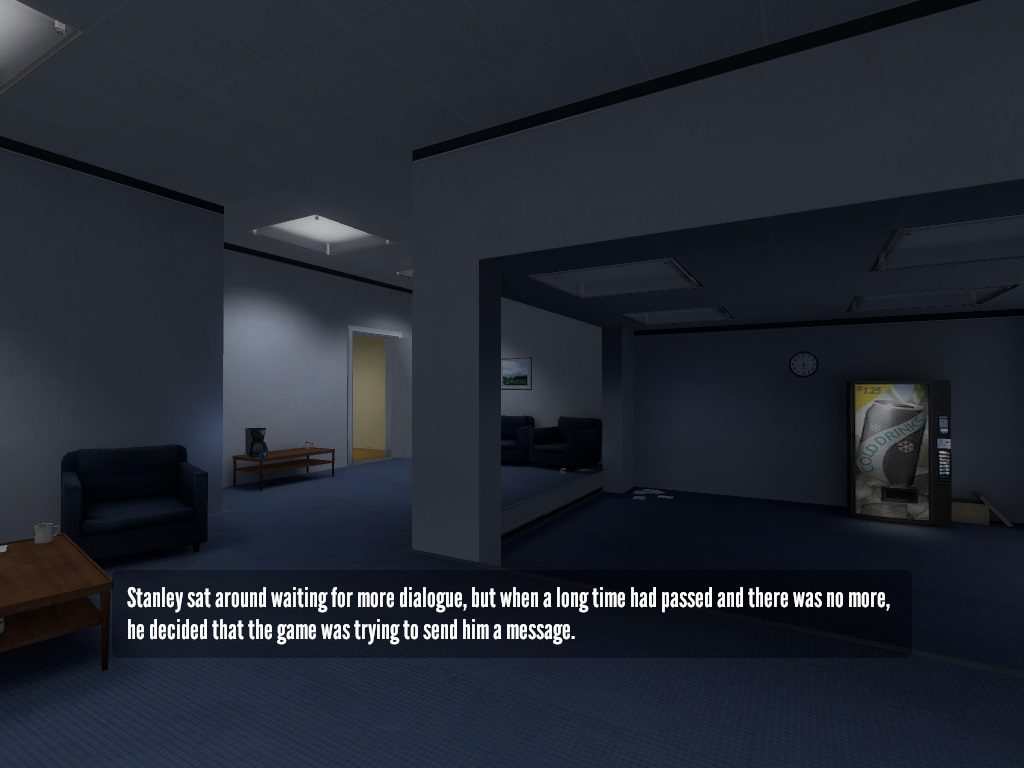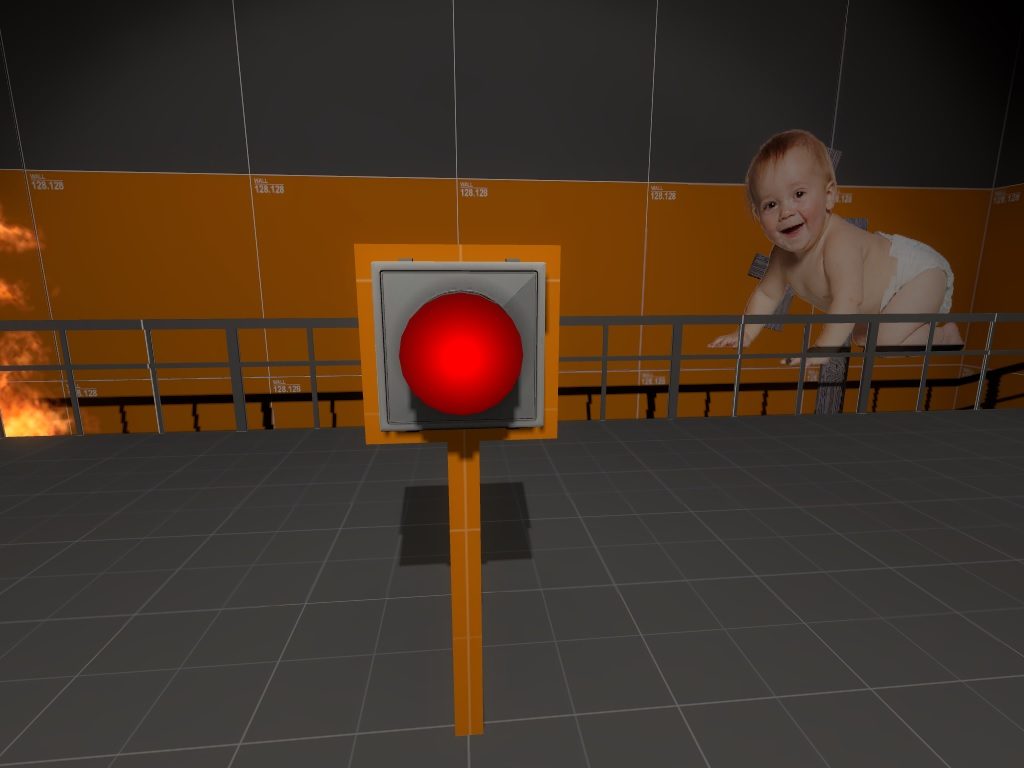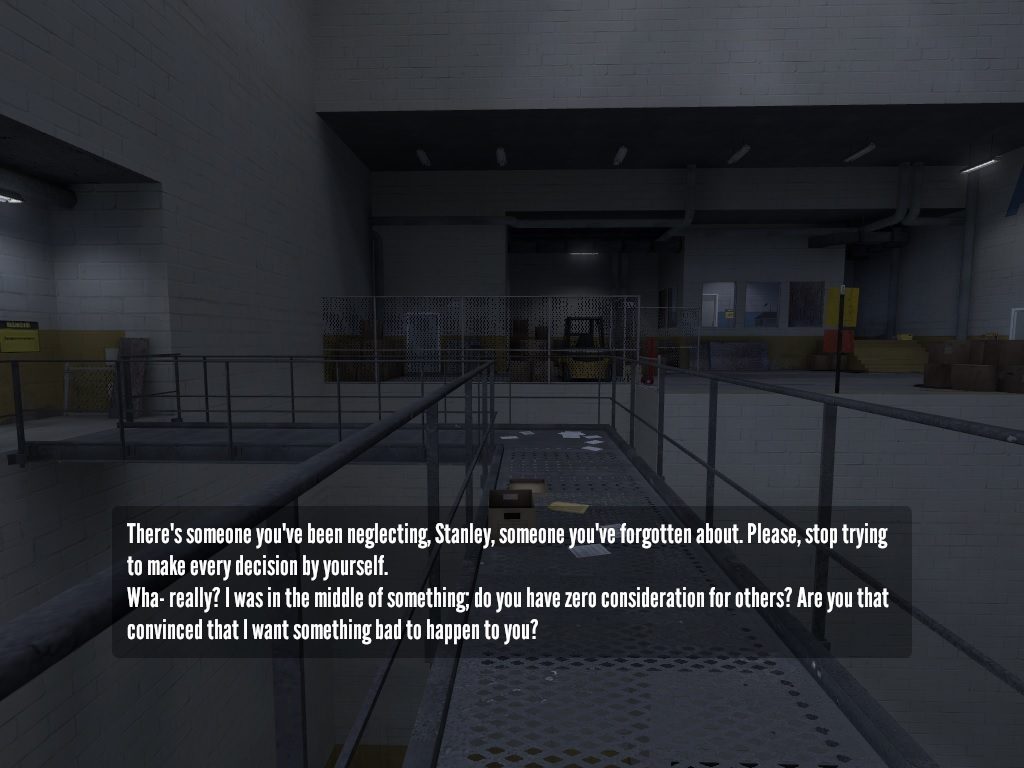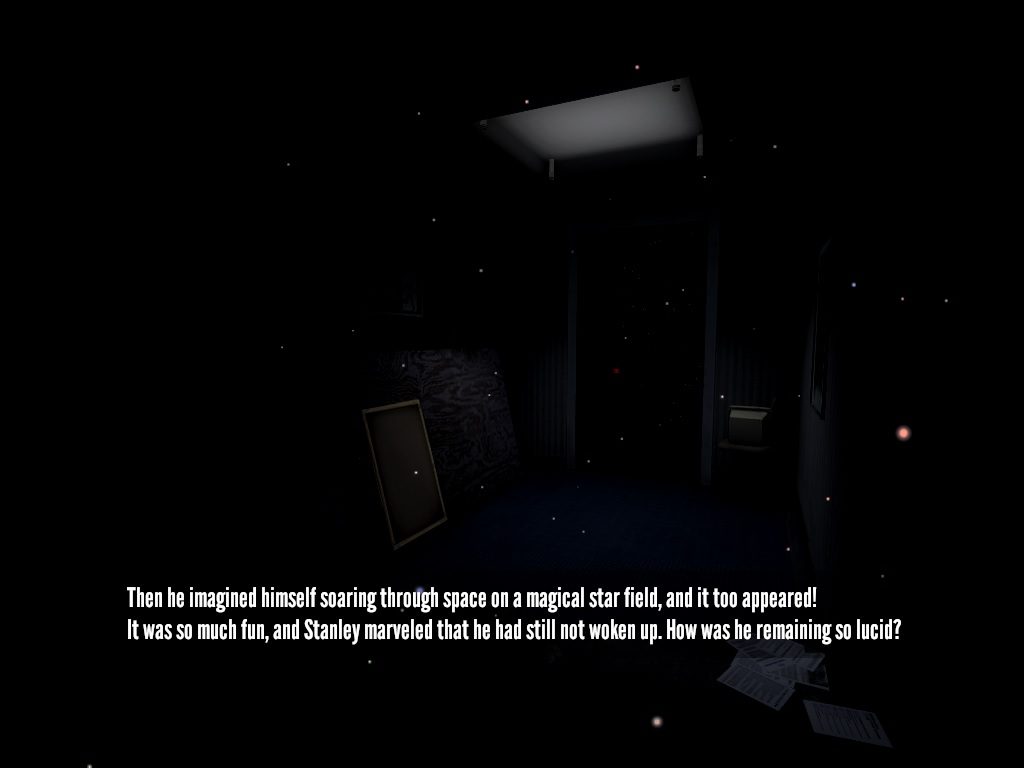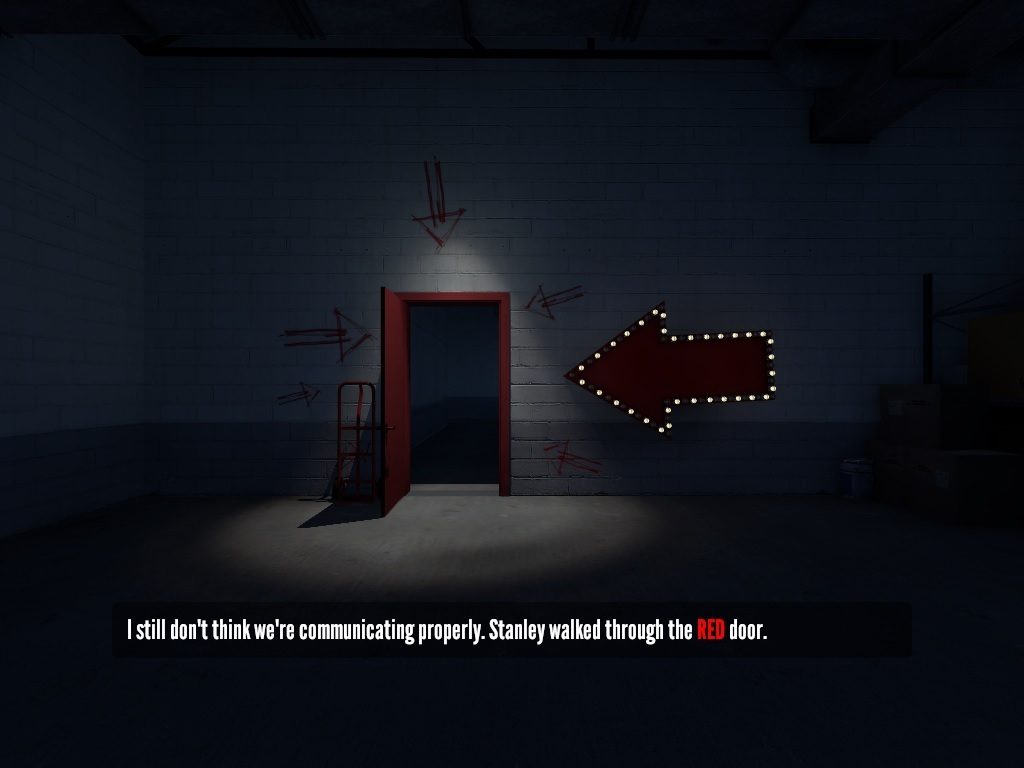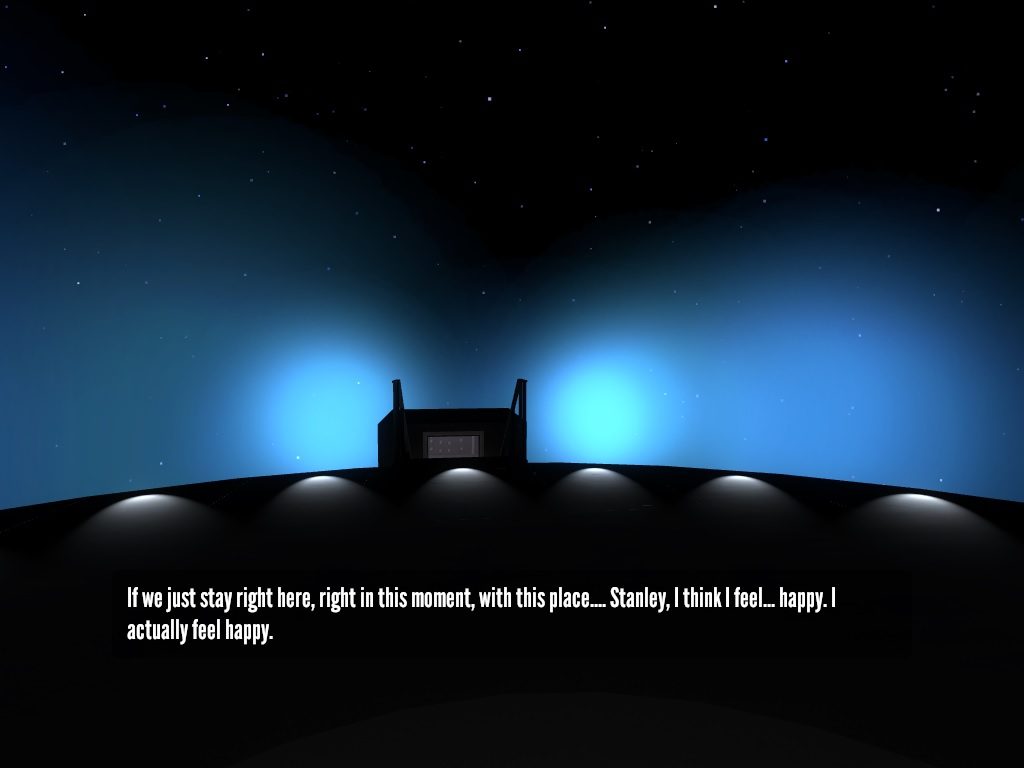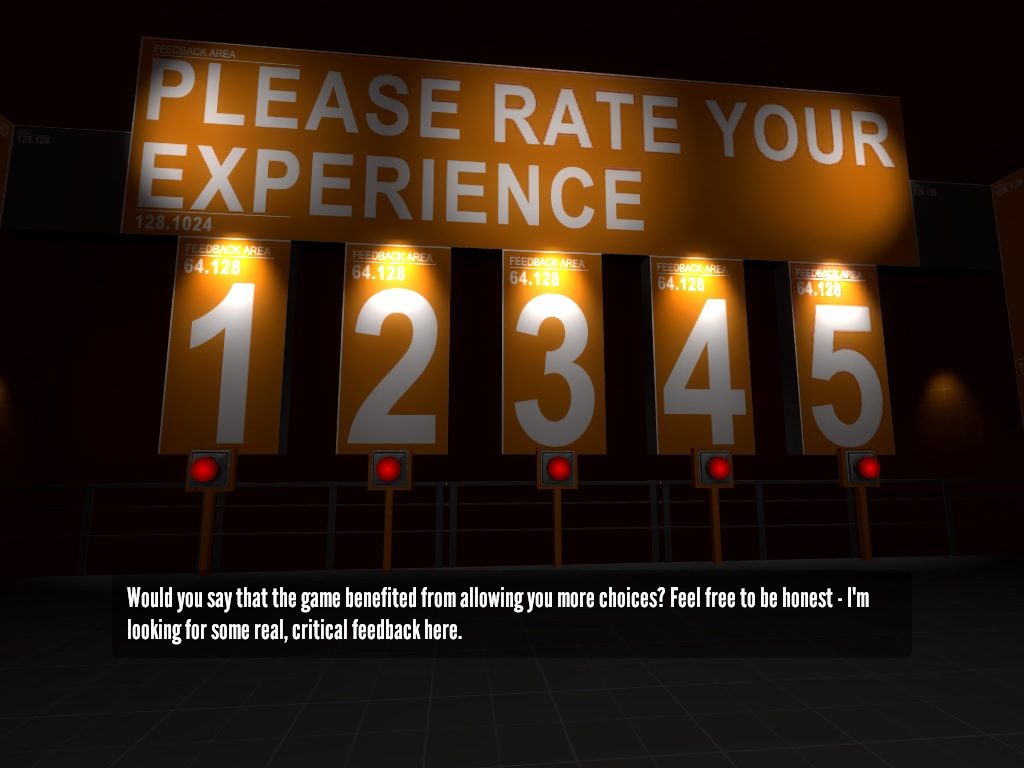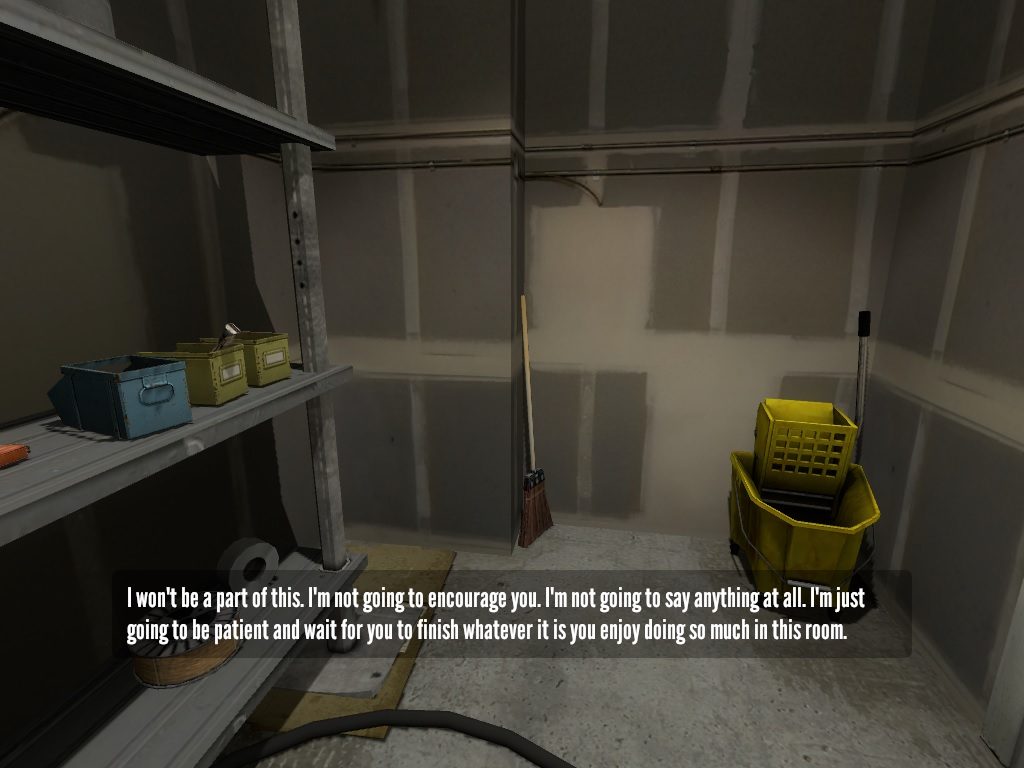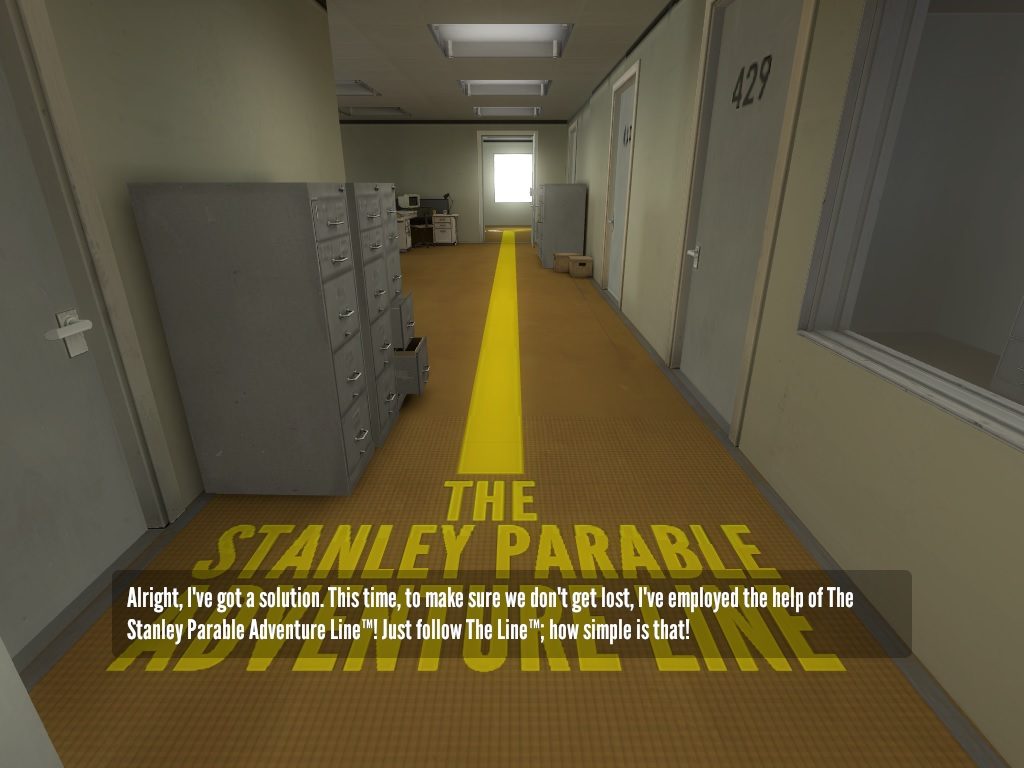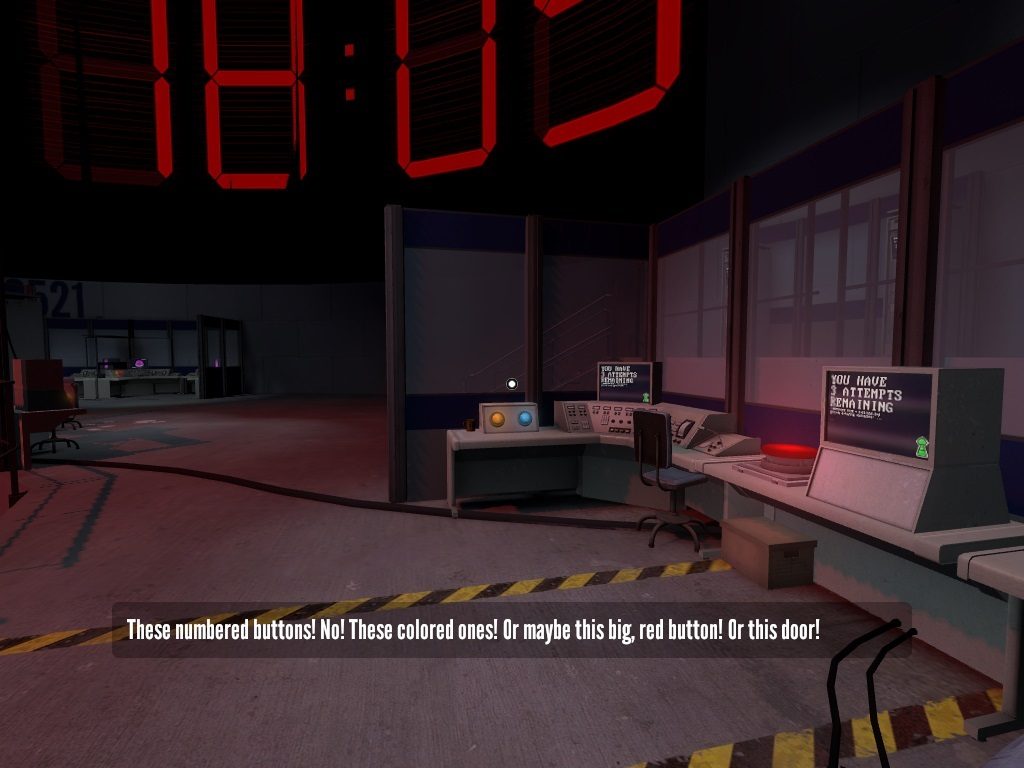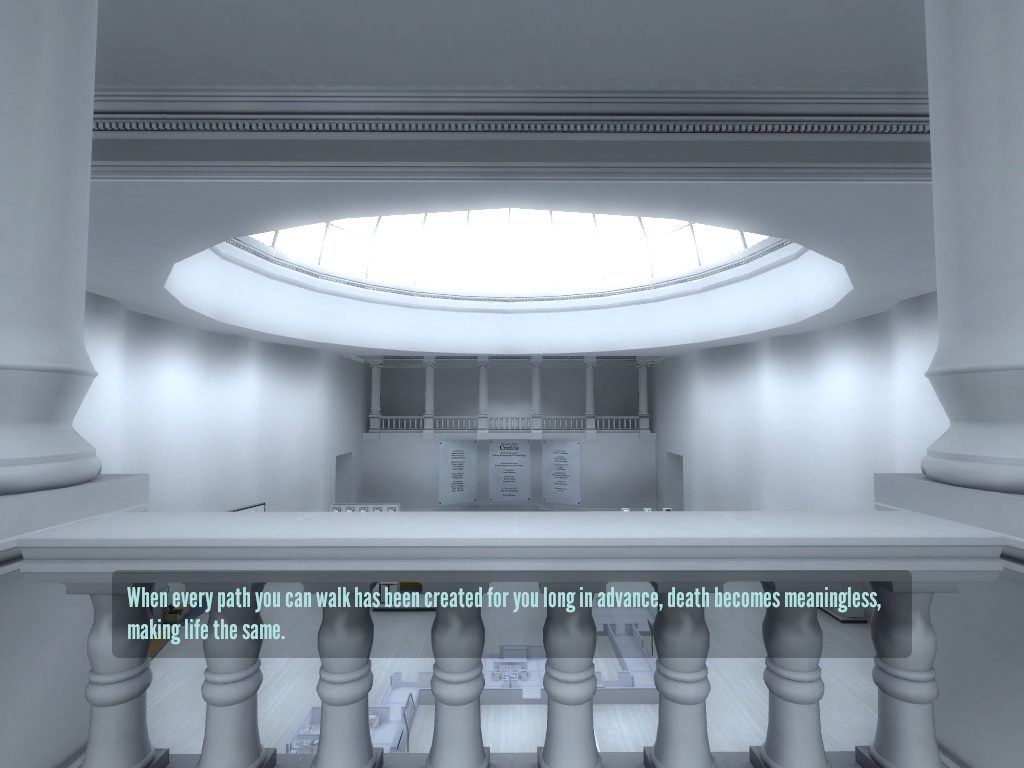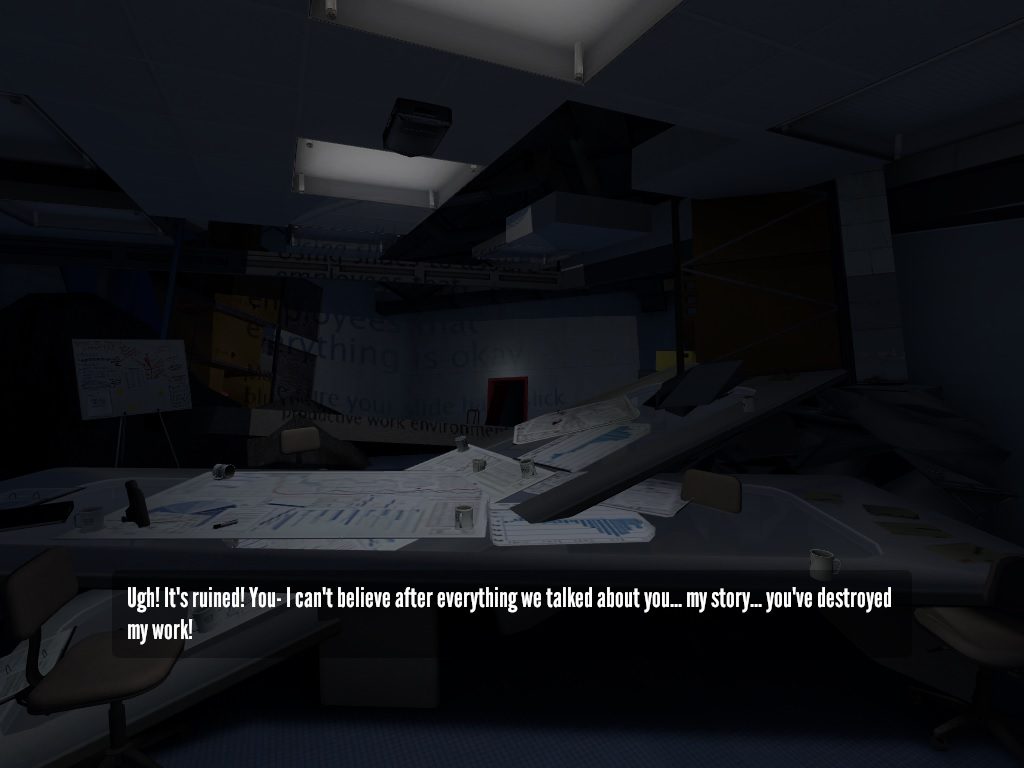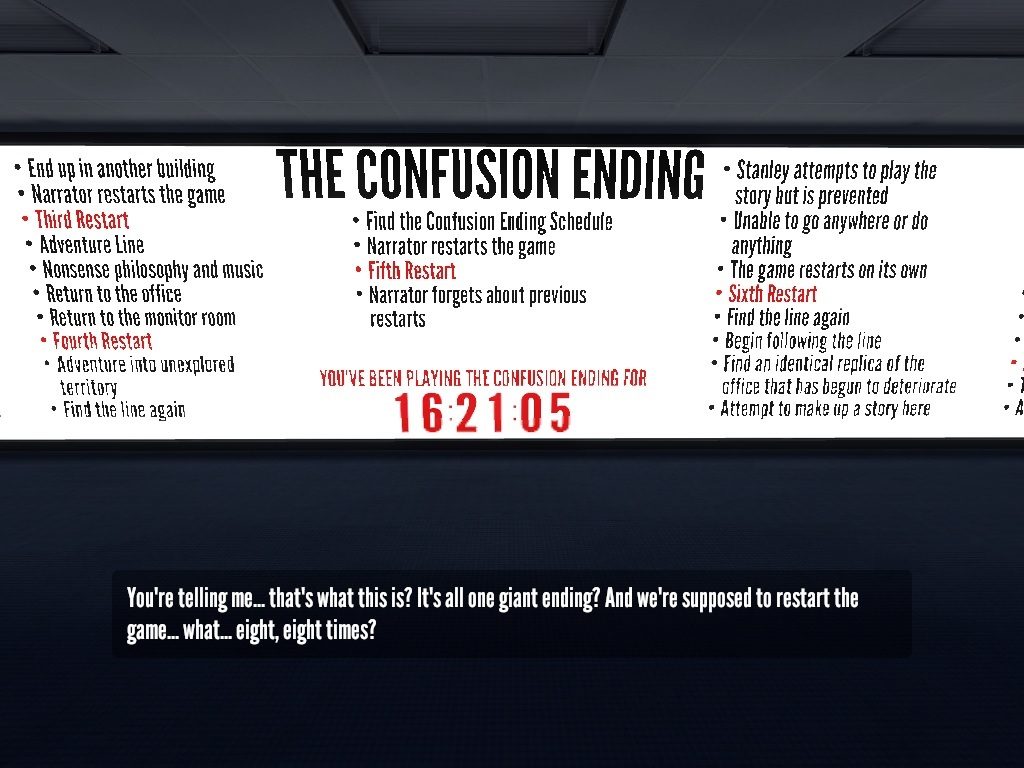The Stanley Parable

Developer: Galactic Cafe
Publisher: Same as Above
Released on Oct 17, 2013
When the live demo of The Stanley Parable was released, it began as a game design test where the player was guided by an omnipresent narrator as he or she tours the inside of a corporate building, being lead into multiple rooms through a 1st person perspective. The narrator soon gains self-awareness of the fact that we are inside his game which is all about making “choices”.
Genre: An Adventure-Indie Game
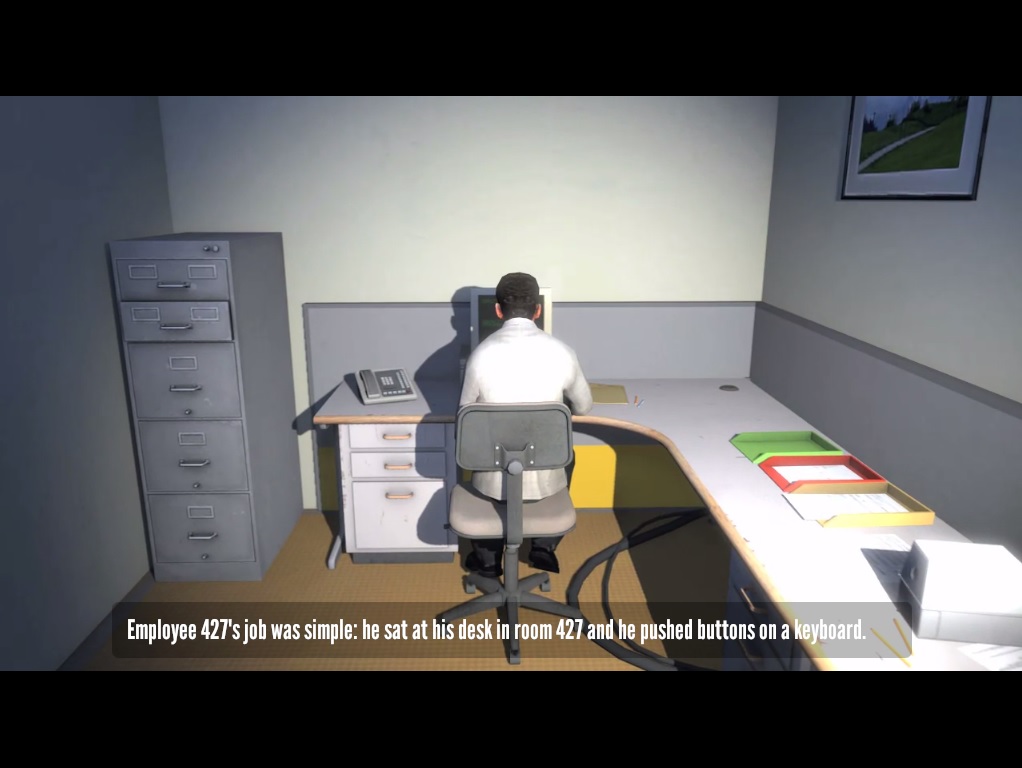
One day, Stanley waited at his desk but no orders came in. At the same time, his coworkers all disappeared without a trace. What could be the cause of this? And what kind of disturbing secrets are hidden behind his boss’s office? Stay tuned to find out…no wait, wrong medium. At the very least, this is the kind of mystery the narrator wants to convey.
The Stanley Parable is an interactive narrative game intended to parody video game tropes and poke fun at gameplay elements that are designed to limit the player’s options, so they fit into a linear, overarching story. Upon an early impression, I would point out how limited the controls are since you can only walk around with no way to jump over obstacles.
At first glance, there doesn’t seem to be anything strange going on. But restart the game several times, then you’ll notice subtle changes in the office rooms and their layouts. There are plenty of hidden Easter Eggs to uncover as well. You control Stanley’s actions to a certain extent, heavily restricted by the narrator who is adamant about railroading you at every given opportunity.
The game always starts in room 427, following a linear path during which the player is instructed to favor one decision over the other, as told by the unseen narrator, who has already decided what happens to Stanley at the end. By exploring a company building, you’ll have to choose which door to go through, what button to push, and whether or not you should listen to the narrator.
The first major decision has to be the “two doors” where the narrator tells you, “When Stanley came to a set of two open doors, he entered the door on his left.” This path takes you to the employee meeting room and then up the stairs to the boss’s office. I’ve summarized the gist of it below since this is the route people normally take on their first playthrough.
From there, Stanley takes an elevator up into a room full of monitors that extend upward, displaying every room in the office, implying that the boss had spied on him and his coworkers. Visibly disturbed, Stanley pressed onward, stepping into the Mind Control Facility, seeing button terminals and computers in a circular room.
Does that mean Stanley’s emotions at work were all manipulated by a greater force? As indicated by those colorful buttons? There were more questions than answers, but that’s not important, really! Stanley was having none of it. So he entered the long hallway at the end of the Mind Control Chamber, to shut down the control panel once and for all.
No matter, what’s done is done. Stanley awaited the day he would be free of his mundane job pressing buttons. He slowly walked into the light, relieved that he won’t be told what to do (wait just a minute) or where to go anymore. The irony lies in that we have the least amount of control over Stanley when he is finally “free”. This is what happens when we don’t make a single decision–the narrator takes over for us.
The incredible amount of self-awareness it displays is astounding, especially when the narrator breaks the fourth-wall to rationalize why you would pick a particular choice or predict what you are about to do. Based on your actions, he has quite a few hilarious lines that are triggered by deviating from the main story. (I’ll try not to spoil too much so people’s enjoyment of the game isn’t affected.)
It makes you wonder–what does it truly mean to experience an in-game story? This isn’t just about beating the game in one sitting, but realizing that there’s likely a lot more going on beneath the surface. Although it’s true you are in control of Stanley, you have no power over the narrator who invents things on the go whenever you ignore his directions. It’s funny to watch him get mad at Stanley for finding the unfinished levels.
He has the final say in what room Stanley is allowed to walk through, preferring to trap him in an infinite loop of repeating rooms, so he can maintain a one-sided conversation. He also has a sadistic side, always trying to kill Stanley the moment he takes the wrong path. Searching for the other endings, you’ll see why Stanley is one unlucky bastard.
I have to admit though, the plot twists are quite entertaining, for a short game with a limited number of endings. My favorite part of the map is still the maintenance area since you can jump off the construction lift onto the walkway below. A lot of players flat out ignore his advice, by wandering off onto a lift or going through the blue door.
The narrator will frequently persuade you to make the “right” choice. He could push Stanley back into a room with two doors because you didn’t walk through…Ahem!–The “Red” door. When you finally decide to listen, he takes you to a starry dome where both of you stop progressing since he is tired of all these choices that push the story forward.
If you continue to disobey, he does eventually give up on pushing his narrative. Rather, he starts inventing new games for you to test on the spot. He designs a work of art where you press the same button for four hours to prevent a baby from running into the fire. People have actually spent that long getting the achievement. That’s one way to kill time haha.
A few rooms exist for no apparent reason like with the broom closet. If the player chills out in the broom closet for too long, the narrator will ask why they would stay there despite having nothing to do. Then, he makes fun of people who actively hunt for secret endings and post them on Youtube. At least you didn’t lock Stanley in his office again.
In my opinion, the “Confusion” ending is the most thought-out one. For the first time, the narrator has no idea what’s going on and has to double-check his own script. This forces him and Stanley to reset the game multiple times, failing to get back on track. The upbeat music and the newly added, yellow adventure line serve to throw you off further into office rooms that repeat themselves.
The building itself seems to generate new areas based on the ending, which is an innovative approach to storytelling. What happens when you answer the phone? You are teleported into Stanley’s apartment where his wife is making dinner. What about walking down the stairs? Stanley slowly goes insane from all the metaphysics.
Did you jump off the construction lift? Now, you’re dead and the narrator revels in your misfortune. Did you glitch out of the window from that desk in the corner? Oops, it turns out this white space is part of the game too. Did you walk down the dark hallway marked “Escape”? Prepare to be crushed by mashy spike plates.
There was also a secret museum hidden somewhere too, featuring the designs used in The Stanley Parable as it was previously in development. But I’d suggest you save that one for when you’ve unlocked most of the endings. So sit back and watch the meta-humor unfold. After all, you are here to experience the ultimate deconstruction of video game tropes.
The last thing you want to do is break the game because this leaves behind overlapping tables, doors bent into walls, and one pissed off narrator, otherwise reducing the entire office into a pile of rubbish. I know the game resets after you reach an ending, turning everything back to normal. In short, your choices have no lasting consequences.
By now, it’s safe to conclude that the Stanley Parable is a battle for control between the player and the narrator, with Stanley being a silent protagonist type. The player has options to pick which ending they want to get whereas the narrator calls the shots on where the rooms will lead. In the end, they both must exist for the game to function as a whole.
The Stanley Parable has got to be the most self-parodying game. Players probably weren’t expecting all those secret endings, like that one time they spawned in a Minecraft world and solved a Portal puzzle shortly after it. Nor do they think too hard about the illusion of choice in video games caused by linear storytelling.
Final Verdict: A self-parodying commentary on game design
